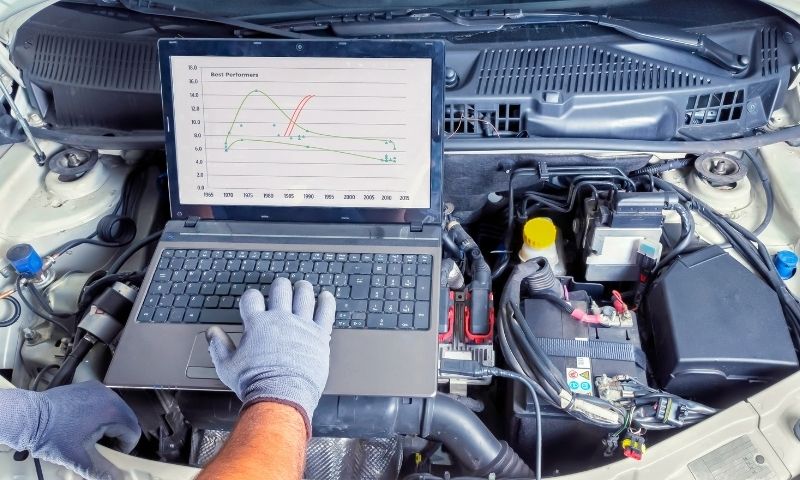A Leading Resource Built By Automotive Lovers, For Automotive Lovers.
We’ve helped consumers around the world make their purchasing decisions.
Latest Articles
EV batteries usually last 10 to 20 years. Key factors include battery chemistry, driving habits, environmental conditions, and maintenance practices. Most batteries still have 80-90% capacity after 8-10 years and… Tesla battery voltages vary by model: Model 3 and Model X are at 350V, Model S at 375V, and Model Y at 400V. Hybrid electric vehicle batteries typically range from… The anode in an alkaline battery is made of zinc powder. It acts as the negative terminal and undergoes oxidation when the battery discharges. The electrolyte used is potassium hydroxide…. A solid-state battery uses a solid electrolyte to move ions between electrodes. This technology improves safety and allows faster recharging. It also has higher energy density and longer lifespan than… A sine wave battery backup, or Pure Sine Wave UPS, converts AC power into DC power for storage. During power outages, it delivers uninterrupted AC power to devices. It offers… A separator in a lithium-ion battery is a thin, porous membrane. It keeps the anode and cathode from touching each other. This membrane allows lithium ions to flow while preventing… The Samsung Battery Pack is a portable charger with a 20,000mAh capacity. It supports Super Fast Charging 2.0, providing a 25W output. You can charge two devices at once with… Self-discharge is when a battery loses its charge while inactive. This natural charge loss happens due to internal chemical reactions. Factors like battery age, cycling behavior, and elevated temperature can… The RYOBI 18V ONE+ Lithium-Ion HIGH PERFORMANCE 4.0 Ah Battery provides up to 4X longer runtime and 30% more power than standard batteries. It uses COOL-CORE technology for better cooling… Battery usage by Safari can be high because of audio drain, especially with iCloud sync on. This causes extra background activity on iPhones, like the iPhone 6. To monitor battery… The reserve battery level shows the battery charge percentage that prompts Windows to alert users to connect to a power source. This level is usually set at 7%. When the… Round trip efficiency (RTE) measures how well a battery storage system (BESS) stores and delivers energy. It represents the percentage of energy input that can be retrieved after discharging. A… The Power Conversion System (PCS) is essential in Battery Energy Storage Systems (BESS). It transforms direct current (DC) from the batteries into alternating current (AC) for the power grid. This… A Pro-Rata Warranty for a battery provides partial coverage after the initial warranty period ends. The replacement cost is based on the remaining warranty time and a portion of the… The rated capacity of a battery shows the maximum energy it can provide when fully charged and under set conditions. It is expressed in milliamp hours (mAh). This value helps… Battery optimization helps conserve power on devices. It manages battery life by learning user patterns. In Android 9.x and higher, it uses Adaptive Battery settings. iOS 13 offers Optimized Battery… Open circuit voltage (OCV) is the voltage of a battery when it is not connected to any load. It shows the potential difference between the battery’s positive and negative electrodes…. Optimized Battery Charging is a feature on iPhones. It helps maintain battery health by delaying charging past 80% in certain situations. This feature analyzes your usage patterns to find the… The nominal voltage of a LiFePO4 battery is 3.2 volts. This stable voltage enhances safety and provides a long cycle life. When fully charged, the voltage reaches around 3.65 volts,… A normal iPhone battery keeps up to 80% of its original capacity after 500 charge cycles. For iPhone 15 models, this threshold extends to 1000 cycles. Apple considers batteries above… The nominal capacity of a battery indicates the amount of energy it can store and provide under normal conditions. This capacity is measured in milliamp hours (mAh). Battery manufacturers include… Nominal battery voltage is the standard average voltage a battery delivers when fully charged. It acts as a reference during operation. Actual voltage can fluctuate; it is higher when the… A nickel-metal hydride (NiMH) battery pack is a set of rechargeable cells that provide higher voltage. They use a chemical reaction to absorb hydrogen for energy. NiMH batteries are cost-effective… NMC (Nickel Manganese Cobalt) battery chemistry uses nickel, manganese, and cobalt in its cathode composition. This type of lithium-ion battery provides a good balance of energy density and thermal stability…. A dual battery system requires a dual battery tray, a deep-cycle battery, a battery isolator, a battery charger, and suitable wiring and fuses. Ensure the auxiliary battery matches the primary… New battery technology focuses on efficiency and safety. Innovations include graphene batteries for fast charging and solid-state batteries with solid electrolytes. Notable examples are NanoBolt lithium tungsten and zinc-manganese oxide… Milwaukee’s M18 High Output batteries offer 50% more power and run 50% cooler than earlier REDLITHIUM options. The XC6.0 and HD12.0 packs work well in extreme cold. They provide fade-free… NCM battery chemistry is a type of lithium-ion battery made from nickel (N), cobalt (C), and manganese (M). This combination offers high energy density and efficiency. NCM batteries generally perform… The maximum discharge current of a battery is the highest current it can safely provide. It is often shown as a “C” rate. For example, a 100Ah battery rated at… Battery capacity measures the total amount of electricity a battery can store. It is expressed in milliamp-hours (mAh) or ampere-hours (Ah). A higher capacity allows devices to run longer. Capacity…EV Battery Lifespan: What Is the Average Lifespan of an EV Battery Explained?
Tesla Battery Voltage: Understanding Its Range, Impact on Performance, and Amperage
Anode in an Alkaline Battery: Its Role, Function, and Chemistry Explained
Solid State Battery Technology: Importance for EVs, Longevity, and How They Work
Sine Wave Battery Backup: Benefits, Importance, and Compatibility for High-End Devices
Separator in Lithium-Ion Battery: Role, Function, and Enhanced Performance Explained
Samsung Battery Pack: Features, Benefits, and 10,000 mAh Power Bank Review
Self Discharge of Battery: Importance, Effects, and How It Works
Ryobi High Performance Battery Review: Is 18V Lithium-Ion Worth the Investment?
Safari Audio Battery Usage: Causes of Drain and Solutions for iPhone Users
Reserve Battery Level: Definition, Impact on Windows Battery Life, and Management Tips
Round Trip Efficiency in Battery Storage: Key Insights and Benefits Explained
What is PCS in Battery Storage? A Guide to Power Conversion Systems Explained
Pro Rata Warranty in Battery: Meaning, Benefits, and Calculator Explained
Rated Capacity of a Battery: Overview of Battery Ratings and Their Impact
Optimizing Battery: Understanding Settings and Techniques for Maximum Performance
Open Circuit Voltage in Battery: Definition, Measurement, and Understanding Explained
Optimized Battery: What It Is, Benefits for Battery Lifespan, and Charging Guide
LiFePO4 Batteries: What is Nominal Voltage? A Comprehensive Guide to Levels and Charging
Normal iPhone Battery Capacity: Average Health, Performance, and Lifespan Explained
Nominal Capacity of a Battery: Understanding Its Impact on Performance and C-Rate
Nominal Battery Voltage: Meaning, Importance, and Applications Explained
NiMH Battery Pack: Key Facts, Charging Basics, and Comparison with Lithium Batteries
NMC Battery Chemistry: Benefits, Applications, and Comparison with LFP Batteries
Dual Battery System: What You Need, Essential Components, and Setup Guide
New Battery Technology: Innovations and Trends in Energy Storage Solutions
Milwaukee High Output Battery: Features, Benefits, and Uses of 18-Volt REDLITHIUM Packs
NCM Battery Chemistry: Understanding Its Impact on Electric Vehicle Technology
Maximum Discharge Current of Battery: C-Rate, Specifications, and Calculations
Battery Capacity: What It Means, Its Importance, and How to Measure It



